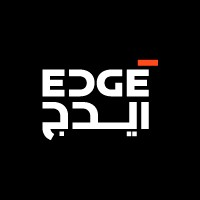Secondary Air Systems & Whole Engine Models - Engineer II
EDGE.com
Office
Abu Dhabi, AE
Full Time
About Powertech
POWERTECH is a center of excellence for propulsion technologies, specializing in the design, engineering, and manufacturing of combustion engines, expendable turbojet engines, and turbofan engines for a wide range of aerospace, defense, and autonomous applications—including fixed- and rotary-wing UAVs and other advanced platforms.
Job Summary
The Engineer – Secondary Air Systems & Whole Engine Models will develop and lead the implementation of advanced 2D thermo-mechanical whole engine models (WEMs) that capture the complete transient thermal and mechanical behavior of gas turbine engines across full and various mission cycles—from startup through steady-state operation to shut down and cooldown. The engineer will also develop and integrate secondary air systems (SAS) models and support cross-functional teams by providing predictive insight into thermal behavior, component clearances and structural integrity.
This role plays a critical part in enabling high-performance, robust propulsion system design by embedding validated transient analysis models directly into the product development workflow, ultimately supporting component design and selection, lifetime assessment, and risk mitigation strategies.
Key Responsibilities
Whole Engine Modeling (WEM)
- Develop 2D axisymmetric thermo-mechanical whole engine models for various aircraft propulsion applications, capturing transient thermal behavior and rotor-stator interactions across full operational scenarios.
- Translate complex 3D gas turbine geometry into efficient 2D simulation domains, accounting for both axisymmetric and non-axisymmetric features (e.g., flanges, ports, blades etc..).
- Incorporate mission profiles (e.g., startup, loading, cooldown, restart) and evolving boundary conditions into transient simulations.
- Use the WEM as a digital twin to evaluate component temperatures, thermal gradients, displacements, and clearances over time.
- Provide critical inputs to structural teams for 3D mechanical movement analysis (e.g., ovality, distortion, lifetime evaluations).
- Participate in the test campaigns to validate findings and update whole engine models accordingly.
Secondary Air Systems (SAS)
- Build and validate 1D SAS networks including internal air paths, cooling flows, leakage paths, and cavities.
- Integrate SAS with WEM to account for convective heat transfer and flow behavior throughout transient engine cycles.
- Use CFD, empirical data, and in-house correlations to inform heat transfer coefficients and boundary conditions across components such as combustors, turbines, compressors, secondary air systems and auxiliaries.
Cross-Functional Collaboration
- Act as the interface between thermal, mechanical, design, CFD, performance, and clearance teams, gathering input for model setup (geometry, materials, operational cycles, heat transfer, etc.).
- Embed WEM and SAS outputs into decision-making workflows, especially for evaluating mechanical integrity, component lifetime evaluation, and clearance control.
Simulation Tools & Process Development
- Benchmark and implement tools such as ANSYS, NX Thermal, Thermal Desktop, AxStream, or similar for thermal and fluid-structure simulation.
- Automate model setup and boundary condition control using scripting (Python, Fortran, MATLAB).
- Develop user-friendly workflows and conditional modeling approaches (e.g., if/then logic for boundary conditions) to capture complex physics during engine transients.
Documentation
- Maintain detailed documentation, including input mapping, assumptions, model validation results, and transient simulation outcomes.
- Author detailed technical reports and support the company’s intellectual property development.
- Provide training and guidance on model usage across the organization.
Qualifications & Experience
- Master’s or PhD in Mechanical Engineering, Aerospace Engineering, or a related field with focus on heat transfer, thermo-mechanics, or propulsion systems.
- 3–7 years of experience in gas turbine engine modeling, with hands-on development of WEM or SAS models.
- Proven experience with FEM/thermal modeling tools and programming/scripting for simulation workflows.
- Strong background in transient thermal analysis, fluid–structure interaction, and thermal boundary condition development.
Skills & Attributes
- Deep understanding of gas turbine physics, especially related to transient thermal behavior, mechanical stress, and clearance evolution.
- Ability to create and integrate cross-disciplinary simulation models representing full engine behavior.
- High level of attention to detail, with strong documentation and data visualization skills.
- Excellent communication skills to interface with multi-disciplinary engineering teams.
- Knowledge of scripting tools such as Python and CFD for the development of localized models.
Desirable
- Knowledge of power generation cycles, combined cycle systems, and hybrid propulsion concepts.
- Experience simulating transient thermals with varying boundary conditions (mass flow rates, inlet temperatures and understanding of heat transfer coefficients correlations.
- Familiarity with gas turbine performance modeling tools and their integration with thermal simulation.
#Powertech
Secondary Air Systems & Whole Engine Models - Engineer II
Office
Abu Dhabi, AE
Full Time
October 3, 2025
